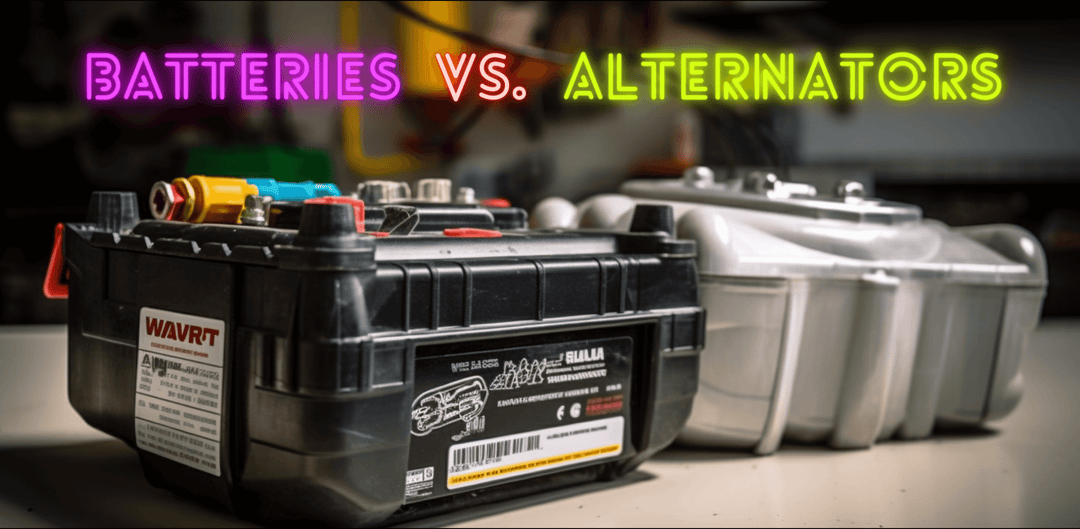5 Signs You Need to Upgrade or Replace Your Vehicle's Alternator to High Output Alternator
Dimming or flickering headlights may be an indication that the vehicle’s alternator is struggling to provide sufficient power for the electrical system, suggesting the need for an upgrade to a high output alternator.
Frequent battery problems, warning lights on the dashboard, strange noises, and weak or failing electrical components can also serve as warning signs of an underperforming alternator.
As such, it is crucial for vehicle owners to pay close attention to these symptoms and consider upgrading to a high output alternator to prevent further issues and ensure the optimal functioning of the vehicle’s electrical system.
Dimming or flickering headlights
Experiencing dimming or flickering headlights can be an indication that the vehicle’s electrical system is struggling to meet the power demands, potentially necessitating an upgrade to a more robust alternator.
Dimming headlights occur when the electrical system is unable to provide sufficient power for all the electrical components in the vehicle, such as the headlights, air conditioning, and car audio system.
Flickering headlights, on the other hand, may be a sign of a fluctuating power supply due to an underperforming alternator.
Upgrading to a high output alternator can help address these issues by providing the necessary power to support the vehicle’s electrical needs, ensuring that all components function optimally without straining the electrical system.
High output alternators are designed to generate more amperage than standard alternators, making them an ideal solution for vehicles with increased electrical demands.
These demands can arise from various factors such as the installation of high-performance car audio systems, additional lighting, and other aftermarket modifications that significantly increase the power requirements of the vehicle.
Upgrading to a high output alternator not only addresses the issues of dimming and flickering headlights but also helps prevent potential damage to the vehicle’s electrical components and prolongs the life of the battery.
It is essential to consider the necessary modifications required to accommodate a high output alternator, such as upgrading power and ground cables, to ensure that the vehicle’s electrical system can safely handle the increased power output.
Frequent battery problems
Frequent battery issues, such as consistently dead batteries or requiring constant jump-starts, can indicate a possible inadequacy in the vehicle’s alternator, suggesting the need for an upgrade to a more powerful option.
High output alternators are designed to deliver a higher amperage output than standard alternators, ensuring that the vehicle’s electrical system has enough power to meet the demands of all its components, including high-performance sound systems, lighting, and other aftermarket upgrades.
Upgrading or replacing the existing alternator with a high output alternator can help to alleviate frequent battery problems by providing sufficient power to keep the battery charged and the electrical system functioning properly.
When considering an upgrade to a high output alternator, it is essential to evaluate the specific power requirements of the vehicle and its various components, as well as the capacity of the existing alternator.
This will help to determine the most suitable high output alternator for the vehicle, ensuring that it can meet the increased power demands without overloading the electrical system or damaging other components.
Additionally, it may be necessary to upgrade the vehicle’s wiring and connections to accommodate the increased power output of the high output alternator.
By addressing frequent battery problems with the installation of a high output alternator, vehicle owners can ensure that their electrical system remains stable and reliable, reducing the risk of battery failure and enhancing overall vehicle performance.
Warning lights on the dashboard
A persistent warning light on the dashboard, such as the battery or alternator indicator, may signify an issue with the vehicle’s alternator, prompting the need for further investigation and potentially necessitating an upgrade to a more powerful model.
High output alternators are designed to handle the increased electrical demands of modern vehicles, providing greater amperage to power the various components and systems.
Warning lights on the dashboard serve as an early detection mechanism, alerting the driver to potential problems with the alternator’s performance or capacity limitations.
Upgrading or replacing an alternator with a high output model can prevent further complications and potential damage to the vehicle’s electrical system.
When the existing alternator is unable to provide the necessary amperage to meet the demands of the vehicle’s various components, it may cause the warning lights on the dashboard to illuminate, signaling the need for an upgrade.
High output alternators offer a more efficient and reliable solution, ensuring that the vehicle’s electrical system can accommodate the increased power requirements while mitigating the risk of premature alternator failure or other related issues.
Strange noises
Unusual sounds, such as grinding or whining, emanating from the engine may indicate worn bearings in the alternator, necessitating a replacement with a more robust model to safeguard the electrical system.
These strange noises are often the first sign that the alternator is on the verge of failure, and upgrading to high output alternators can help prevent further damage to the vehicle’s electrical components.
High output alternators are specifically designed to handle the increased power demands of modern vehicles, providing a reliable source of electricity for various functions, including headlights, air conditioning, and radio systems.
When considering an upgrade or replacement of the current alternator to a high output model, it is essential to assess the vehicle’s overall electrical requirements, including any aftermarket modifications such as high-powered audio systems or additional lighting.
High output alternators can provide the necessary amperage to support these additional power needs without overtaxing the factory-installed alternator, thus prolonging its life and ensuring consistent performance.
Furthermore, it is crucial to use the appropriate gauge wire when upgrading to a high output alternator to ensure optimal conductivity and prevent potential damage to the vehicle’s electrical system.
By addressing strange noises early on and selecting the right high output alternator for the vehicle, drivers can maintain optimal performance and protect their investment in their automobile.
Weak or failing electrical components
Inadequate performance of electrical components, such as power windows, radio, or air conditioning, may indicate the necessity for an upgraded alternator to provide a sufficient power supply for optimal functionality.
The alternator output plays a vital role in supplying energy to various vehicle components, and a weak or failing alternator may cause these components to underperform, leading to a compromised driving experience.
Upgrading to a high output alternator can alleviate these problems by increasing the available amperage to meet the demands of the vehicle’s electrical system, thereby ensuring the proper functioning of all electrical components.
Failing electrical components, in turn, can generate a cascade of issues that may affect the overall performance and safety of the vehicle.
A weak or underperforming alternator may not supply the required energy for essential functions such as headlights, turn signals, or brake lights, which can pose safety hazards while driving.
Furthermore, a weak or failing alternator can cause a vehicle’s battery to drain, leading to starting difficulties or even complete failure to start.
Upgrading to a high output alternator can prevent these issues by providing a more robust energy supply that ensures the longevity and reliability of the vehicle’s electrical components.
Conclusion
In conclusion, recognizing the warning signs that your vehicle's alternator may be underperforming is essential for maintaining the health and functionality of your vehicle's electrical system. Upgrading to a high output alternator can not only solve issues like dimming headlights, frequent battery problems, and dashboard warning lights, but also improve overall vehicle performance and prevent further complications. When considering such an upgrade, it is important to assess your vehicle's electrical demands, accommodate necessary modifications, and select the most suitable high output alternator to ensure long-lasting, consistent performance. By doing so, you can enjoy a safe, reliable, and enjoyable driving experience.




